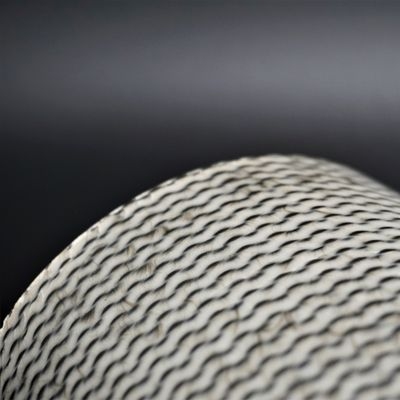Properly tubed: Knitted glass in sewer rehabilitation.
Customer project for a manufacturer of inline systems.
Inliners for sewer rehabilitation are a fine thing. Where typical signs of age appear on pipes, such as cracks, leaks, root ingrowths or even breaks, their hour has come. This is always the case when a closed construction method is preferable to an open one - for example, in inaccessible areas. But what role can a knitted fabric play here?
The goals: more strength, less downtime.
To seal the damaged pipe, in systems like our customer's, a textile tube is impregnated with resin and blown into the pipe under high pressure in an inverting process. The tube bonds to the pipe, and the sewer becomes tight again after drying. The renowned manufacturer of inliner systems wanted to improve precisely this tube.
The specialists had seen on our website that we also knit glass fibers. So their task was clear to us: to develop a densely knitted glass fabric for the outside of the textile tube that could bind enough resin to achieve exceptionally high stability in the tube. In addition, the new material was to improve the drapability of the tube at tube transitions. Both aspects left much to be desired with the longitudinally sewn polyester fleece currently in use.
The solution: knit strength and stitch density in the ideal ratio.
Our BUCK team started the 6-month development work by testing different glass yarn thicknesses and adjusting the stitch size repeatedly. Thus, several patterns with diffevarying thicknesses of yarn created on the machine selected for this purpose. The material of our choice: an e-glass filament. On our behalf, Vereinigte Filzfabriken AG with its lineTEC brand processed the finished knitted tube into a complete inliner by joining the knitted fabric and the actual film tube.
Our customer confirms the perfect function of the inliner hose. The good thing about our solution: is the right ratio of knit thickness and stitch density without a filament break. Drapeability in curves had also improved significantly compared to the previously used nonwoven. And that, of course, makes us happy.


